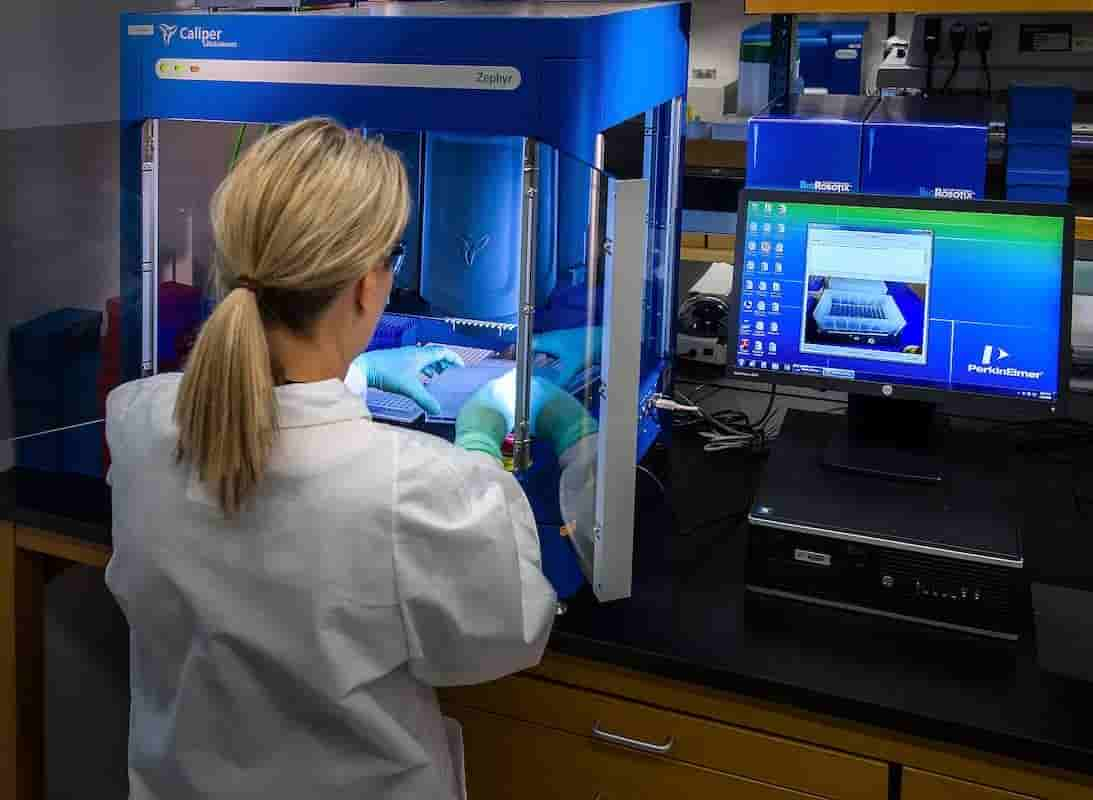High-Performance Healthcare Software Solutions in 2023

The healthcare industry has long been dependent on technology, and the appearance of high-performance healthcare software solutions is a logical step forward. In 2023, these solutions have the potential to revolutionize the healthcare digital world, offering lots of benefits. Robust digital health applications are also the possible cure to the impending healthcare provider shortage, as the United States will most likely experience a shortage of about 122,000 physicians by 2032 and 670,000 healthcare workers, including nurses, by the same year.
This article provides an overview of the current state of the healthcare software development market, the advantages of high-performance healthcare software solutions, examples of innovative solutions, barriers to implementing them, and a glimpse into the future of this technology.
The current state of the healthcare software market
The healthcare IT market worldwide is forecasted to reach a staggering $390.7 billion by 2024. Commonly used healthcare software solutions include EHRs, telemedicine platforms, patient engagement software, and healthcare analytics software.
Despite the growing adoption of healthcare software solutions, current solutions still face significant limitations. One major challenge is the lack of interoperability between healthcare systems, which can potentially hinder the seamless exchange of patient data. Lack of interoperability can cause life-threatening delays in diagnosis and treatment, and even errors in medication management.
Additionally, healthcare providers may struggle to access patient information quickly and easily, particularly in emergency situations. Managing and interpreting the vast amounts of data generated by healthcare software solutions can be a challenge, requiring advanced data analytics and data management capabilities.
While software solutions for healthcare can significantly improve patient care and streamline daily healthcare workflows, the current condition of the healthcare software market highlights the need for high-performance solutions that can help with overcoming the limitations of existing healthcare technologies.

Advantages of developing a high-performance healthcare software solution
High-performance medical software solutions provide multiple benefits for healthcare practices. One of the prominent advantages of high-performance healthcare software systems is the ability to process large data sets in real time. In such a manner healthcare providers can make data-driven decisions, improve patient outcomes, and decrease healthcare operational expenses.
Another common benefit of high-performance healthcare systems is the capability to integrate with other healthcare solutions, such as EHRs and telehealth platforms. Thanks to such integrations, healthcare practitioners can get access to all-around patient data.
In addition, high-performance software can improve healthcare provider workflow by reducing the administrative burden. This way medical staff can focus more on delivering timely and quality patient care and spend less on performing tedious administrative tasks.
Furthermore, these solutions can improve patient care by providing access to more holistic and accurate patient information. Such information may include medical history, medication prescriptions, and other relevant data. By having access to this information, healthcare providers can form a big picture of patient health and make more accurate diagnoses. Plus, high-performance healthcare medical software also can help decrease the costs of healthcare service delivery by improving workflow efficiency and reducing waste.
As you see, the advantages of high-performance healthcare software solutions are numerous and varied. From improving patient outcomes and provider workflow to reducing healthcare costs and improving data accuracy.
Examples of high-performance healthcare software
There are lots of innovative high-performance healthcare software solutions currently available in the market:
Artificial Intelligence (AI) based diagnostic tools: AI algorithms show incredible results in analyzing medical images, such as CT scans, MRIs, and X-rays. These AI-based diagnostic tools can quickly and accurately analyze images, identify anomalies, and provide insights to healthcare professionals. These tools reduce the likelihood of misdiagnosis.
Personalized treatment plans: Personalized medicine is an emerging field that uses individual patient data to develop customized treatment plans. High-performance healthcare software solutions can analyze a patient’s genetics, lifestyle, and other health information to develop personalized treatment plans that are more effective than traditional treatment options.

Predictive analytics tools: Predictive analytics solutions make use of real-time data, machine learning algorithms and techniques to define the possibility of a certain outcome drawing on historical data. In the healthcare sector, such a type of analytics can be helpful to differentiate patients who are at risk of having certain conditions (e.g diabetes or heart disease). Medical staff can use this information to proactively provide necessary treatment or even prevent the development of such conditions.
These types of medical software are changing the way healthcare providers deliver care and are creating new opportunities for patient experience. The implementation of these solutions requires collaboration between healthcare providers, software developers, and data scientists. Together, they can build the technology infrastructure and processes needed to support the development and deployment of high-performance healthcare software solutions.
Barriers to implementation
Implementing high-performance healthcare software solutions can be a challenging process for healthcare providers due to various financial, logistical, and human barriers. The primary barrier to implementing these solutions is the significant investment required in infrastructure, hardware, and software. That’s why healthcare organizations need to ensure that they have the necessary financial resources to sustain the implementation of these solutions in the long term.
Another significant challenge is the resistance from staff and patients who may be hesitant to adopt new technologies. In such cases, healthcare organizations should come up with efficient strategies to address most of these concerns. One possible solution to encourage software adoption among staff is to involve them in the implementation process and provide training and support to ensure that they are comfortable with the new technology.
Moreover, implementing high-performance healthcare software solutions requires careful planning and coordination to ensure that they are integrated with existing systems and workflows. This integration process may require much time and effort as well as changes in existing workflows. Therefore, medical practices should develop a detailed roadmap for healthcare software implementation to reduce disruptions and ensure a smooth transition.
While there are several barriers to implementing high-performance healthcare software solutions, healthcare providers can overcome these challenges through careful planning, effective communication, and engagement with staff and patients. The multiple benefits of implementing these solutions can outweigh the challenges associated with their implementation.
Future of high-performance healthcare software solutions
The future of high-performance medical software solutions looks promising and bright, with the potential to improve patient outcomes and advance medical research. However, you should also take into account the ethical implications of using these solutions. For example, questions about data privacy, bias in algorithms, and the potential for technology to replace human judgment must be addressed. Healthcare providers and hospitals can prepare for the future of high-performance healthcare software solutions by investing in infrastructure, staff training, and data security measures.
High-performance healthcare software solutions are definitely set to transform the healthcare sector in 2023 and the years to come. By embracing these solutions, healthcare providers and hospitals can significantly optimize service delivery, streamline daily workflows, and reduce healthcare costs. If you entrust high-performance software solution development to a qualified technical partner you can save much time and avoid common challenges.


